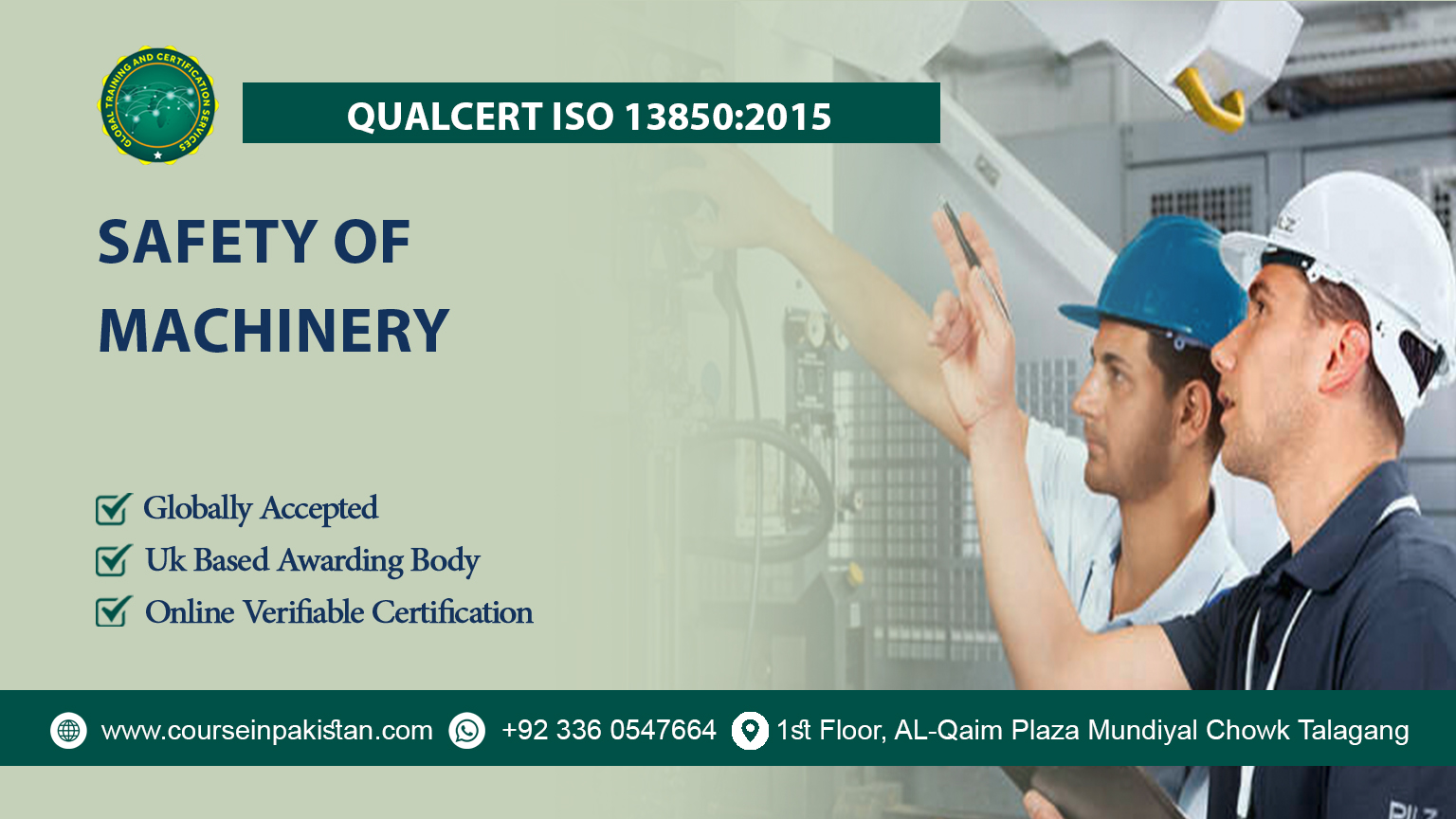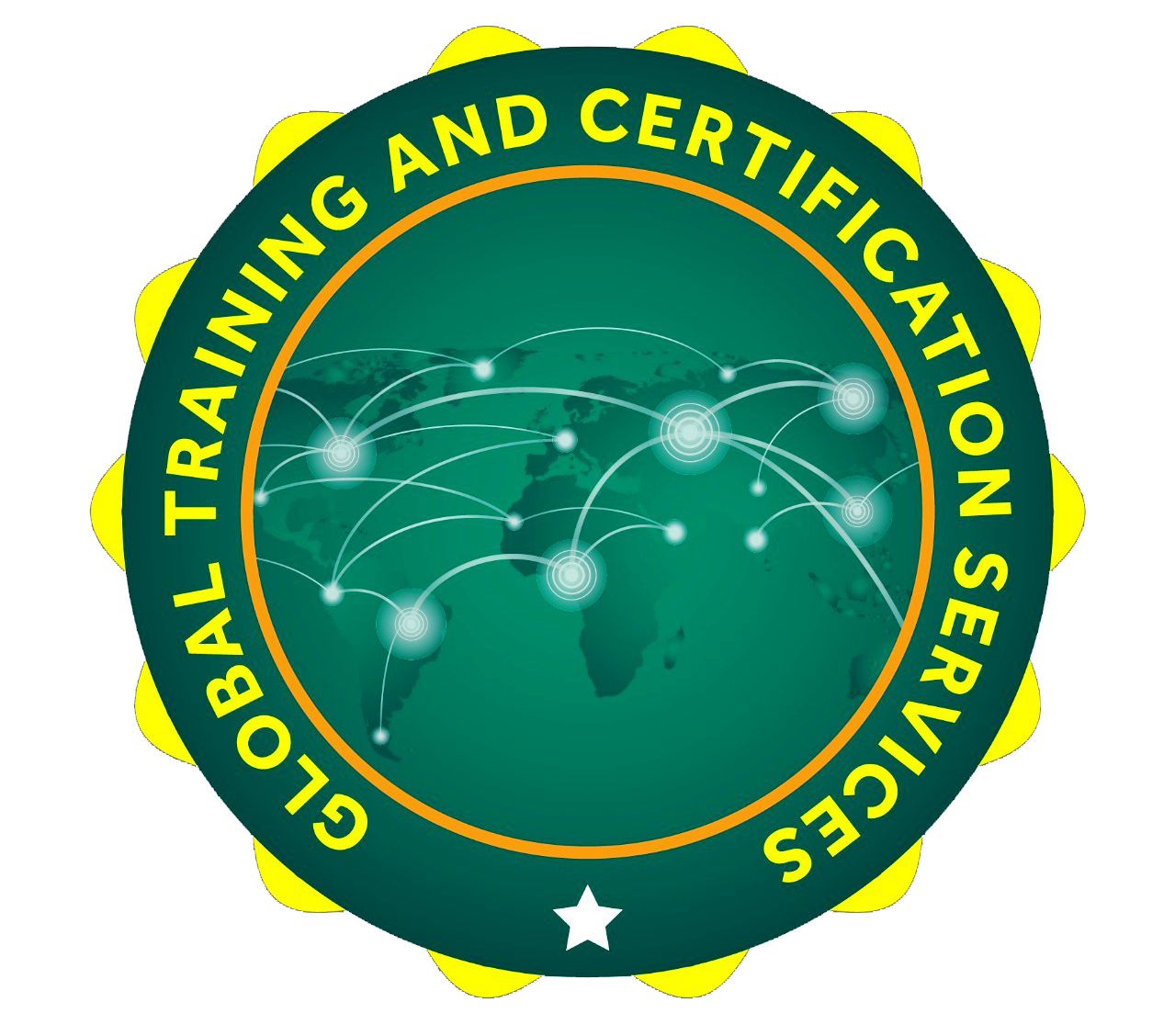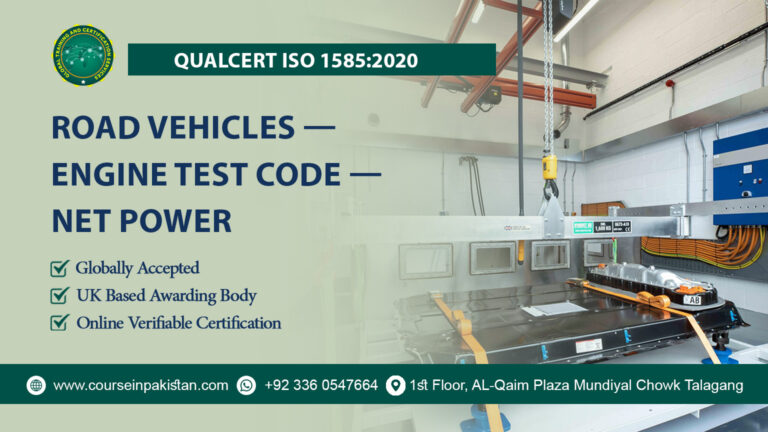
Welcome to the QualCert ISO 13850:2015 in Safety of Machinery course! This essential training program is designed for professionals looking to deepen their understanding of machinery safety standards, specifically the ISO 13850:2015, which governs the emergency stop functions in industrial machinery. ISO 13850:2015 plays a crucial role in protecting workers by ensuring that machinery has proper emergency stop systems to prevent accidents or injury during operation. This course will provide you with the knowledge and practical skills required to implement and manage these systems effectively in your workplace.
Course Overview:
The QualCert ISO 13850:2015 in Safety of Machinery course covers the core principles of the ISO 13850:2015 standard, which focuses on the design and implementation of emergency stop functions in machinery. This course offers an in-depth look at how to design, assess, and maintain emergency stop systems to ensure compliance with this vital standard. By integrating these systems into machinery safety protocols, you will be able to improve safety, reduce risks, and protect employees from potential hazards.
The course takes a comprehensive approach, including both theoretical and practical components, such as evaluating emergency stop devices, understanding key design principles, and ensuring compliance through testing and documentation. You’ll also engage in real-world case studies and scenarios, allowing you to apply the learned concepts to actual machinery safety situations.
Course Benefits:
By completing the QualCert ISO 13850:2015 in Safety of Machinery course, you will experience numerous benefits:
- Expert Knowledge of ISO 13850:2015: Gain a deep understanding of the ISO 13850:2015 standard and its role in machinery safety.
- Practical Application: Learn to design, implement, and evaluate emergency stop systems that meet industry safety standards.
- Enhance Workplace Safety: Contribute to a safer working environment by applying best practices for emergency stop systems.
- Career Advancement: Improve your career prospects in the machinery safety and industrial engineering sectors with a recognized certification.
- Compliance Assurance: Ensure your machinery and systems are compliant with ISO 13850:2015, reducing risks and enhancing operational safety.
Course Study Units:
- Introduction to Machinery Safety Standards
- Fundamentals of Emergency Stop Function
- Design Principles for Emergency Stop Systems
- Activation and Resetting Requirements
- Response Time and Performance Evaluation
- Integration with Safety Systems
- Documentation and Compliance
- Practical Applications and Case Studies
- Maintenance and Testing Procedures
- Capstone Project: Emergency Stop System Design
Course Learning Outcomes:
Introduction to Machinery Safety Standards
- Understand the significance of global machinery safety standards in ensuring a secure working environment.
- Explore the purpose and key role of ISO 13850:2015 in enhancing machinery safety.
- Review the historical development and evolution of regulations for emergency stop functions.
Fundamentals of Emergency Stop Function
- Define the emergency stop function and its critical role in machinery safety.
- Identify key principles and best practices for designing effective emergency stop systems.
- Differentiate between various types of emergency stop devices and understand their specific applications.
Design Principles for Emergency Stop Systems
- Learn the guidelines for selecting and properly positioning emergency stop devices.
- Evaluate key factors influencing the design of emergency stop systems, including machine type and operational environment.
- Design emergency stop systems with a focus on visibility, accessibility, and user ergonomics.
Activation and Resetting Requirements
- Understand the requirements for activating emergency stop devices in urgent situations.
- Master the procedures for safely resetting emergency stop systems after activation.
- Implement strategies to prevent accidental restarts and ensure a safe restart process.
Response Time and Performance Evaluation
- Learn the importance of response time in the effectiveness of emergency stop systems.
- Conduct performance evaluations to assess the reliability of emergency stop devices.
- Test emergency stop systems to confirm they meet the requirements outlined in ISO 13850:2015.
Integration with Safety Systems
- Understand how to integrate emergency stop functions with other machinery safety systems.
- Coordinate emergency stop systems with interlocking devices, guards, and other protective measures.
- Develop strategies to ensure a holistic safety approach that covers all potential hazards in machinery applications.
Documentation and Compliance
- Learn how to accurately document emergency stop procedures and related safety protocols.
- Develop emergency stop manuals and user instructions in alignment with ISO 13850:2015.
- Ensure your systems adhere to the ISO 13850:2015 standard and other relevant regulatory requirements.
Practical Applications and Case Studies
- Analyze real-world case studies involving emergency stop functions in machinery.
- Apply your knowledge by designing and implementing emergency stop systems in practical machinery scenarios.
- Evaluate response times and overall effectiveness of emergency stop systems through simulated exercises.
Maintenance and Testing Procedures
- Develop and implement maintenance procedures to ensure the ongoing reliability of emergency stop systems.
- Conduct routine inspections and tests to ensure the emergency stop systems continue to meet safety standards.
- Troubleshoot and resolve common issues and malfunctions in emergency stop systems to maintain optimal performance.
Capstone Project: Emergency Stop System Design
- Apply all the knowledge and skills gained throughout the course to design a complete emergency stop system.
- Implement an emergency stop system tailored to a specific machinery scenario, ensuring all safety aspects are covered.
- Present your capstone project, including detailed documentation, design, and test results, to peers and instructors for review and feedback.
Who is This Course For?
The QualCert ISO 13850:2015 in Safety of Machinery course is ideal for:
- Safety Engineers and Managers: Professionals responsible for ensuring the safety of machinery in industrial environments.
- Machinery Designers and Engineers: Those involved in designing and developing machinery that meets safety standards.
- Compliance Officers: Professionals focused on ensuring compliance with safety regulations in manufacturing and industrial settings.
- Health and Safety Practitioners: Individuals working to improve safety procedures and reduce accidents in industrial operations.
- Industrial Technicians: Technicians who maintain, inspect, and implement safety systems in machinery.
Future Progression:
Upon completing the QualCert ISO 13850:2015 in Safety of Machinery course, you can progress further in the field of machinery safety and compliance by pursuing advanced certifications such as:
- ISO 45001 Occupational Health and Safety Management Systems: Gain a deeper understanding of occupational health and safety management practices.
- ISO 13854:2017 Safety of Machinery: Expand your expertise in machinery safety, particularly in the context of safeguarding against crushing hazards.
- Advanced Risk Management Certifications: Explore more specialized safety management courses in industrial risk assessment and mitigation.
- Health, Safety, and Environmental (HSE) Leadership: Prepare for senior leadership roles in health, safety, and environmental management.
The QualCert ISO 13850:2015 in Safety of Machinery course is a vital training program for professionals looking to enhance their expertise in machinery safety, specifically in the design and implementation of emergency stop systems. By mastering ISO 13850:2015, you will help create safer working environments, ensuring compliance with global safety standards. Whether you’re looking to advance your career or improve safety practices in your organization, this course provides the knowledge and practical skills to make a significant impact.






